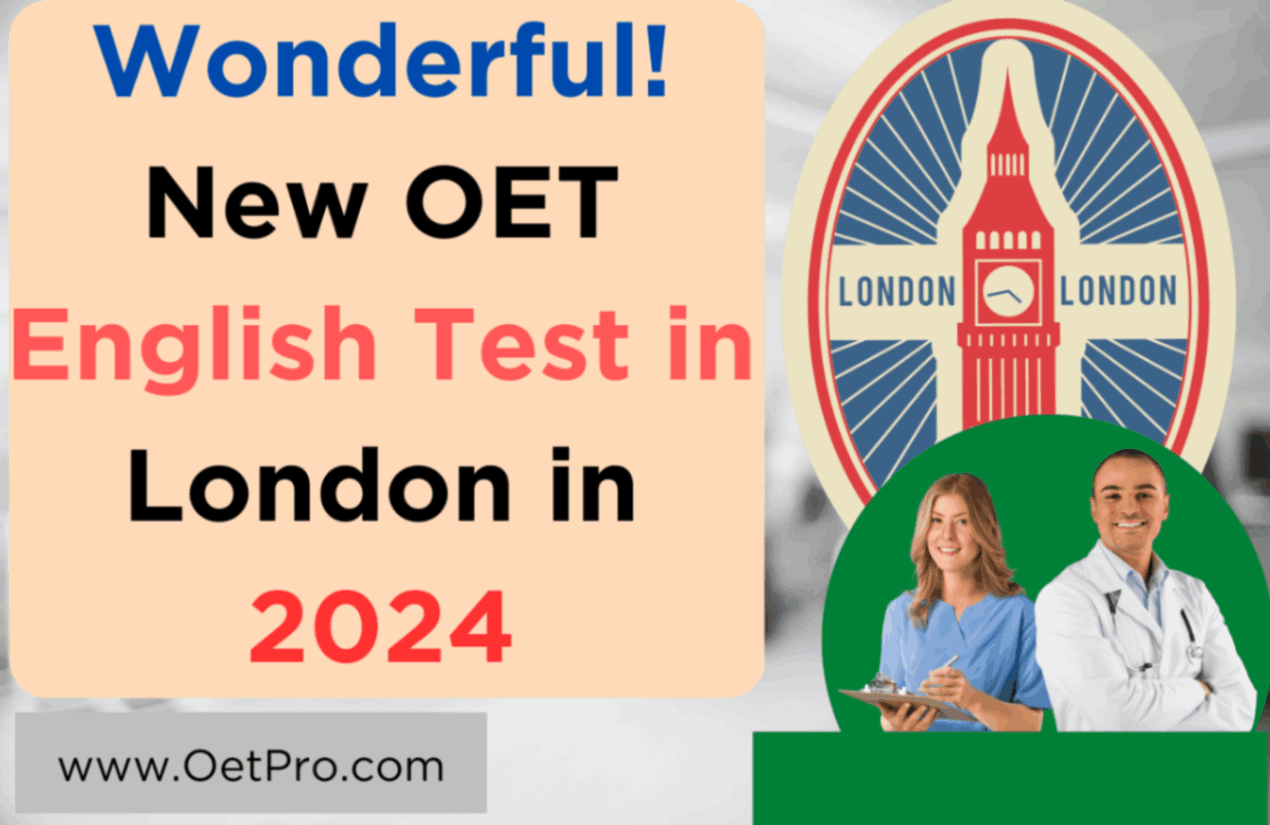
Wonderful! New OET English Test in London in 2024
The updated Occupational English Test (OET) will bring a big change to the healthcare industry in 2024 in the busy city of London. Effective communication is a key part of good patient care as healthcare professionals manage complex responsibilities.
The OET, designed to test language skills in real healthcare settings, has taken a major step forward with a new version tailored to the changing communication needs of today’s medical environment.
This article explains the “OET English Test in London”, its purpose, unique features, and the expected impact on healthcare communication in one of the world’s most dynamic cities.
What Does OET Mean?
The Occupational English Test (OET) is an essential exam for healthcare workers who need strong communication skills in their professional field.
OET is more than a general English test—it focuses deeply on the nuances of medical communication. It assesses the specific language skills required for accurate, clear, and context-appropriate communication in healthcare.
The test adjusts its evaluation for different professions such as medicine, nursing, dentistry, pharmacy, and allied health. Each version is carefully designed to match that profession’s communication needs, ensuring relevance and precision.
Since its creation, OET has continuously evolved to match modern medical practices and communication styles. It reflects real-time communication challenges that healthcare workers face daily.
What Is the OET Test Structure?
The OET is designed to test healthcare language skills in a complete and profession-specific way. It includes four major sub-tests, each targeting an essential skill.
1. Listening Sub-Test
This section measures how well candidates understand spoken English in medical situations. It has three parts, featuring consultations, professional discussions, or healthcare lectures.
2. Reading Sub-Test
The reading test checks comprehension of real healthcare materials such as case notes, hospital policies, and medical journal extracts.
3. Writing Sub-Test
The writing test requires candidates to produce a profession-based document, such as a referral, discharge, or transfer letter. It assesses clarity, structure, and professional tone.
4. Speaking Sub-Test
The speaking test includes two role-plays where the candidate interacts with a trained interlocutor acting as a patient or another healthcare worker. It focuses on real-life communication skills.
Different Types of OET
OET offers 12 profession-specific versions, including:
-
Dentistry
-
Dietetics
-
Medicine
-
Nursing
-
Occupational Therapy
-
Optometry
-
Pharmacy
-
Physiotherapy
-
Podiatry
-
Radiography
-
Speech Pathology
-
Veterinary Science
Each version aligns with profession-specific terminology and communication styles.
What Makes OET Unique?
One of OET’s biggest strengths is its integrated approach. All skills listening, reading, writing, and speaking are connected, just like real healthcare communication.
The test uses authentic materials and realistic scenarios to ensure relevance. Candidates who pass OET demonstrate strong communication skills needed for their specific healthcare role.
OET Test Centers in London
Here are some key OET test centers located in London and nearby cities:
-
International House London
-
High Holborn House
-
London Central Eurocentres
-
Ealing, Hammersmith & West London College
-
Wimbledon School of English (London Exam Centre)
-
International House Chelmsford
-
English for Medicine Plus
-
International House Cambridge
-
LSI Portsmouth
-
Sefton House (Online Tests)
-
Leicester College
-
International Students Ltd
-
Anglo-Continental
-
Birmingham City University – School of Technology
-
Worcester Medical UK
-
Bristol Pitman Training
-
International House Birmingham
-
Celtic English Academy Cardiff
-
Accent International Torquay
-
LILA Liverpool
Characteristics of the New OET English Test
The updated OET has an improved structure aligned with modern healthcare communication. It offers:
-
A strong focus on healthcare
-
Discipline-specific versions
-
Realistic materials
-
Role-play based speaking test
-
Integrated assessment
-
Global recognition
-
Accessible test centers
-
Fair and standardized scoring
-
Support for candidates with special needs
-
Continuous updates based on healthcare trends
Why Is OET Considered Difficult?
Preparing for OET is challenging for several reasons:
1. Complex Medical Vocabulary
Candidates must understand a wide range of medical terms, making vocabulary a major challenge.
2. Unique Test Format
The integrated nature of the test mimics real-world communication, which can feel overwhelming at first.
3. Requires Focused Preparation
Success requires regular practice, exposure to healthcare communication, and familiarity with the test structure.
Top 10 Tips for Preparing for OET
-
Understand the test format clearly.
-
Learn medical vocabulary thoroughly.
-
Use official OET practice materials.
-
Join OET-specific training programs.
-
Practice under real test conditions.
-
Identify and strengthen weak areas.
-
Improve reading speed and comprehension.
-
Practice speaking using role-plays.
-
Seek feedback from experts or peers.
-
Create a structured study plan.
OET vs Other English Tests
OET vs IELTS/TOEFL
-
OET focuses on healthcare communication; IELTS/TOEFL test general English.
-
OET has profession-specific versions; others do not.
-
OET uses real healthcare scenarios; others use general content.
-
OET speaking includes role-plays; others include general questions.
-
OET scoring is healthcare-specific; others follow general criteria.
For healthcare workers, OET is usually the more relevant choice.
Final Thoughts
The new OET English Test in London for 2024 is a significant milestone for healthcare professionals. It ensures they meet the communication standards required in modern healthcare settings.
By taking the OET, candidates can unlock better career opportunities, global mobility, and professional growth.
Frequently Asked Questions
Q1. Is the new OET test mandatory for all healthcare workers?
No, but it is widely preferred by employers and institutions.
Q2. How can I best prepare for the OET?
Use official materials, join training programs, and practice regularly.
Q3. What makes OET different from tests like IELTS and TOEFL?
It focuses specifically on healthcare communication.
Q4. Can OET be taken in languages other than English?
No, OET is available only in English.
Q5. Is OET accepted worldwide?
Yes, it is recognized globally by healthcare employers and institutions